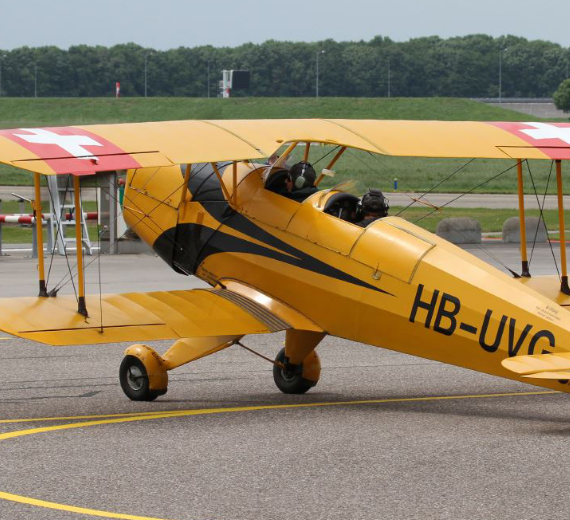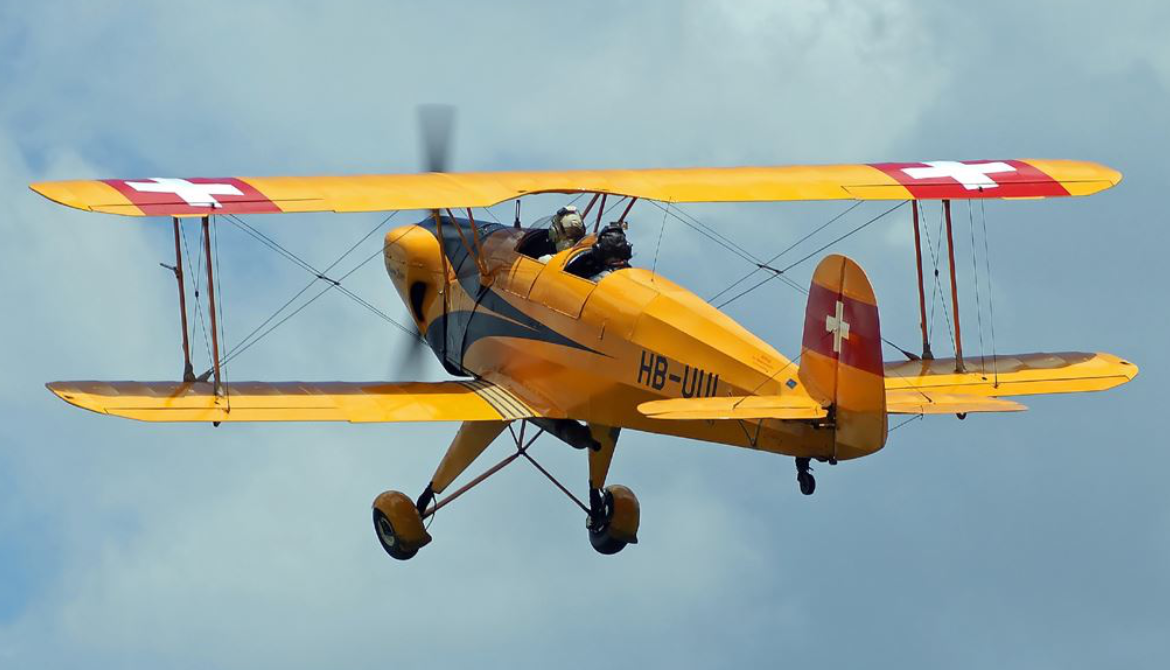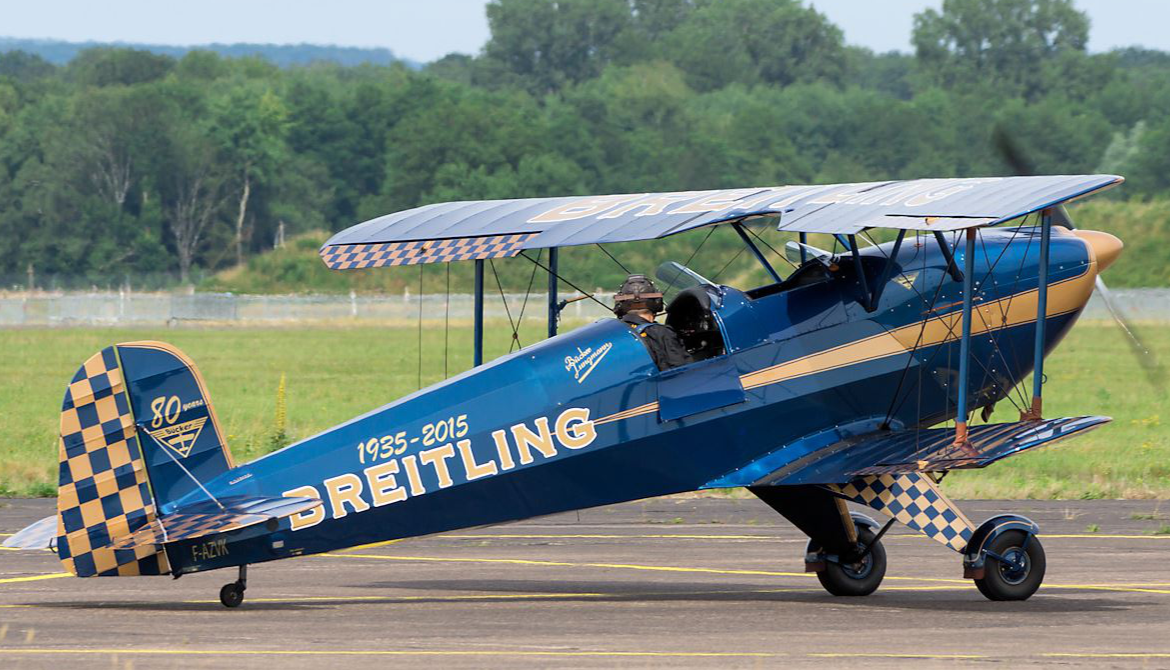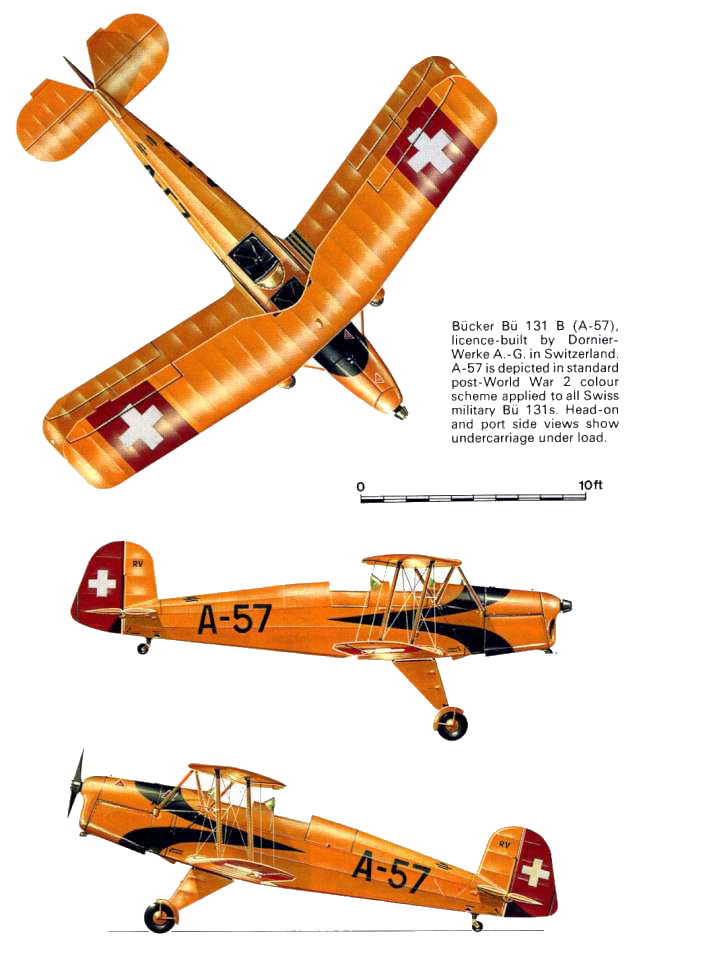Bücker-Flugzeugbau
Bücker-Bü-131 Jungman
Role Basic trainer
National origin Germany
Manufacturer Bücker Flugzeugbau
Designer Carl Bücker [de]
First flight 27 April 1934
Introduction 1935 (Luftwaffe)
Retired 1968 (Spanish Air Force)
Primary users Luftwaffe
Spanish Air Force
Imperial Japanese Army Air Service
Royal Hungarian Air Force
Produced 1935–1945
Number built around 5000
Developed into Bücker Bü 133 Jungmeister
.
History Bücker-Flugzeugbau GmbH
Bücker Bü 131 Jungman
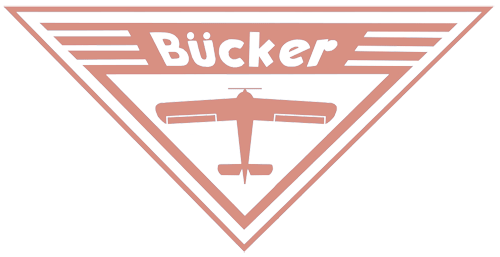
The Bücker Bü 131 Jungmann (freshman, young man) is a German 1930s basic training aircraft which was used by the Luftwaffe during World War II.
After serving in the Kaiserliche Marine in World War I, Carl Bücker moved to Sweden where he became managing director of Svenska Aero AB (Not to be confused with Svenska Aeroplan AB, SAAB). He later returned to Germany with Anders J Andersson, a young designer from SAAB. Bücker Flugzeugbau GmbH was founded in Berlin-Johannisthal, in 1932, with the first aircraft to see production being the Bü 131 Jungmann.
While it was Bücker Flugzeugbau's first production type, the Bü 131A was the last biplane built in Germany. It had two open cockpits in tandem and fixed landing gear. The fuselage was steel tube, covered in fabric and metal, the wings wood and fabric. It first flew on the 80 hp (60 kW) Hirth HM60R..
Variants


- Bü 131A
- Two-seat primary trainer biplane. Initial production version.
- Bü 131B
- Improved version, powered by the more powerful Hirth HM 504A-2 piston engine.
- Bü 131C
- Experimental version, fitted with 90 hp (67 kW) Cirrus Minor piston engine. One built.
- Nippon Kokusai Ki-86A Army Type 4 Primary Trainer
- Japanese production version for the Imperial Japanese Army Air Service. Powered by a Hitachi Ha47
- Nippon Kokusai Ki-86B Army Type 4 Primary Trainer
- Wooden airframe version to relieve scarce supplies of strategic materials.
- Kyushu K9W1 Momiji Navy Type 2 Trainer Model 11
- Japanese production version for the Imperial Japanese Navy. Powered by the Hitachi GK4A Hatsukaze 11
- Tatra T.131
- Czechoslovakia, pre-war licence production in Tatra Kopřivnice.
- Aero C-4
- Mass-produced in Aero factory in occupied Czechoslovakia during wartime under original Bücker Bü 131B designation, used postwar with original Hirth engine.
0
KmCeiling
0
KmCombat RANGE
0
Km/hAircraft Speed
0
Max Crew
Photo Gallery
Bücker-Flugzeugbau GmbH
Bücker Bü 131 Jungman


Bücker-Flugzeugbau GmbH
Bücker Bü 131 Jungman
General Info
-
-
- Crew: 2
- Length: 6.62 m (21 ft 9 in)
- Wingspan: 7.4 m (24 ft 3 in)
- Height: 2.25 m (7 ft 5 in)
- Wing area: 13.5 m2 (145 sq ft)
-
Powerplant
-
-
- Empty weight: 380 kg (838 lb)
- Gross weight: 670 kg (1,477 lb)
- Powerplant: 1 × Hirth HM 504 4-cylinder invertead air-cooled in-line piston engine, 75 kW (100 hp)
- Propellers: 2-bladed fixed-pitch propeller
-
Performance
- Maximum speed: 183 km/h (114 mph
- Cruise speed: 170 km/h (110 mph,
- Landing speed: 82 km/h (51 mph;
- Range: 650 km (400 mi, 350 nmi)
- Service ceiling: 4,300 m (14,100 ft)
.
Links to Youtube & Others
In 1994, the Bü 131 was restored to production briefly using CASA jigs by Bücker Prado in Spain, with 21 aircraft constructed as the BP 131.
Bücker-Flugzeugbau GmbH
Bücker Bü 131 Jungmman
while in Poland SSH Janusz Karasiewicz also started production of a version of the Jungmann
Youtube Link
In 2022, Junkers Aircraft Works began production of a modernized version of the A50. This new A50 features modern avionics, a 100 hp Rotax 912iS engine.
